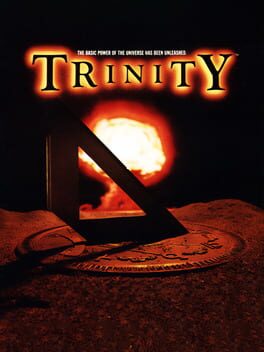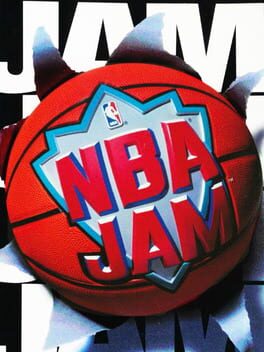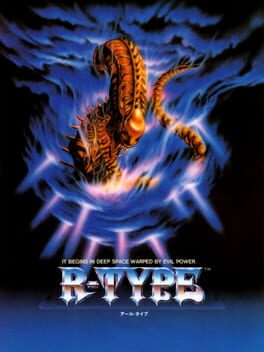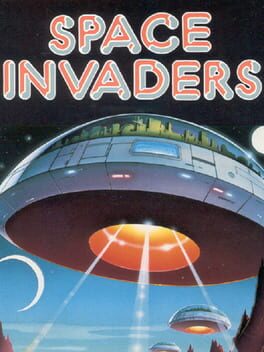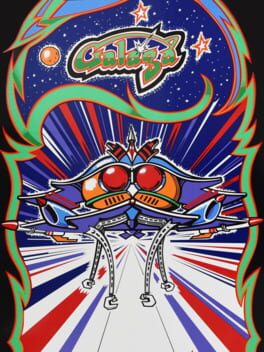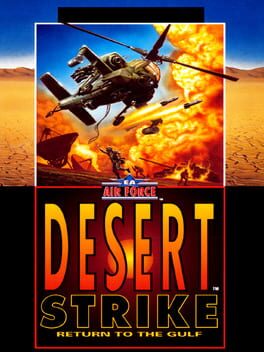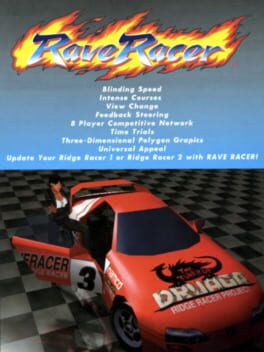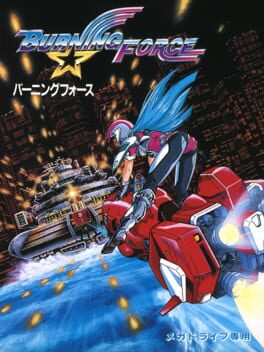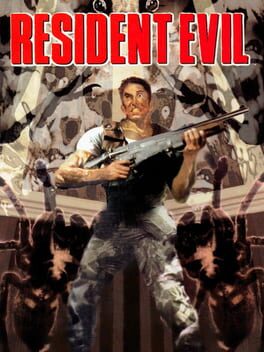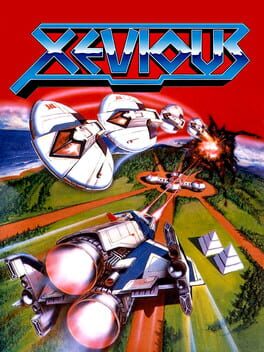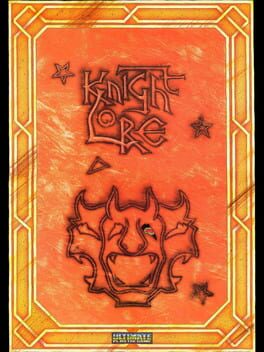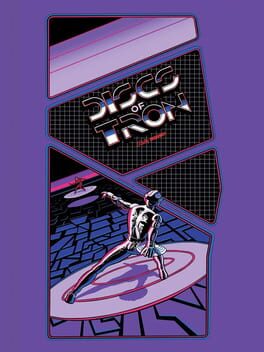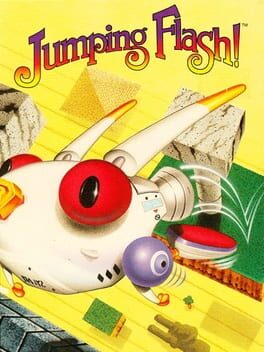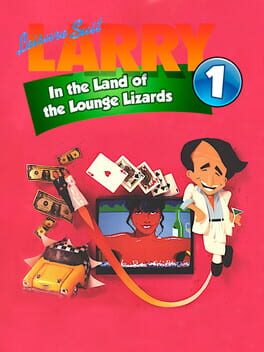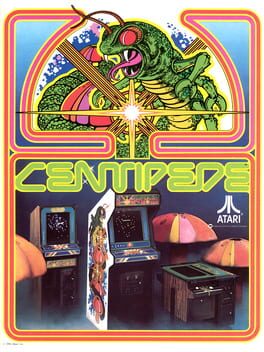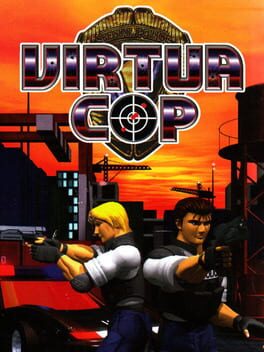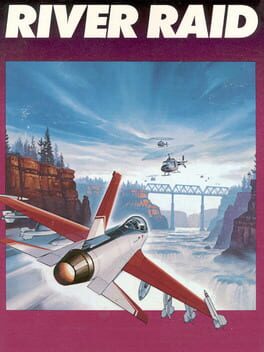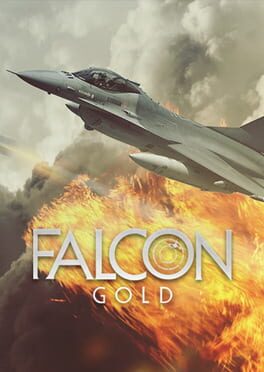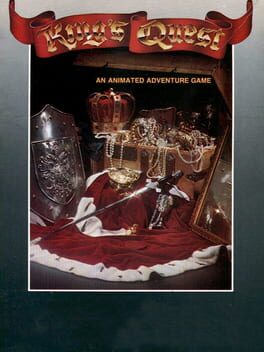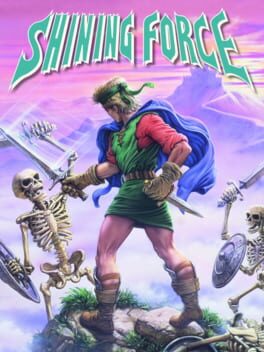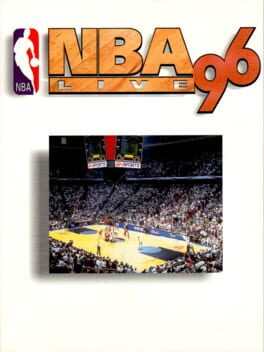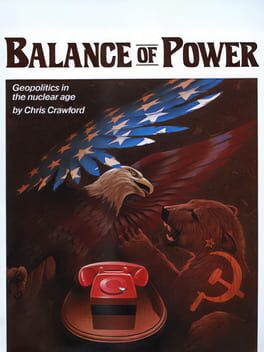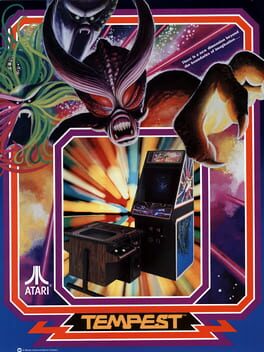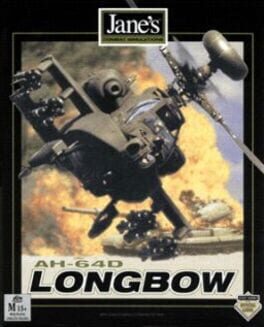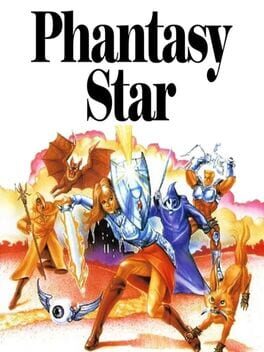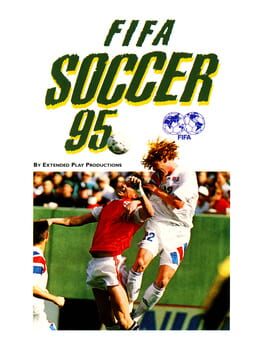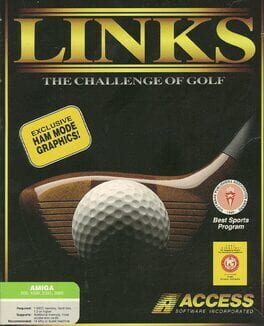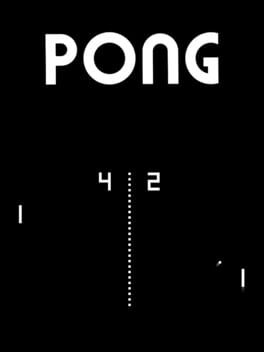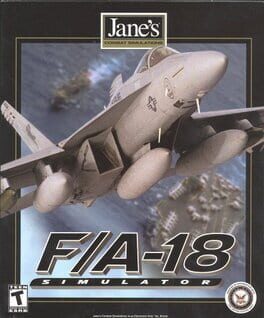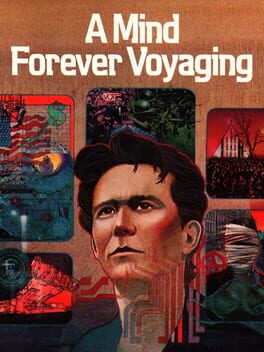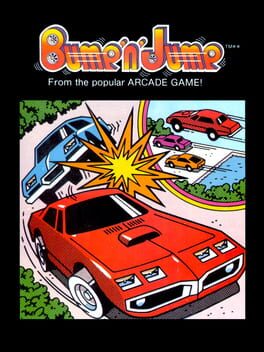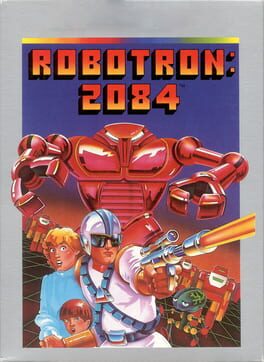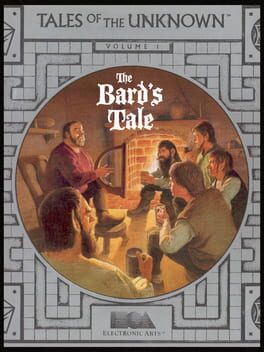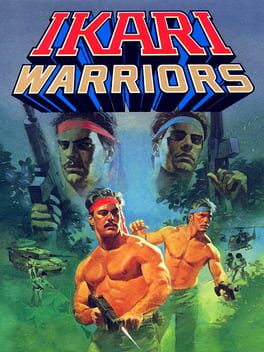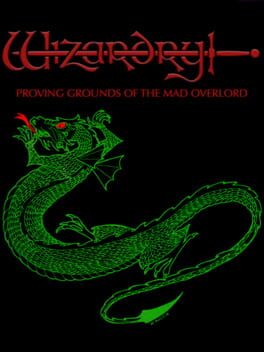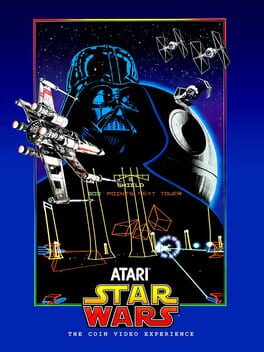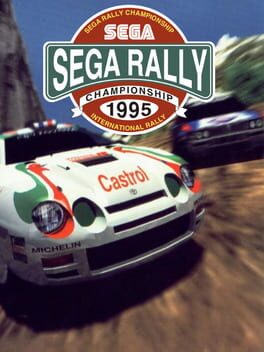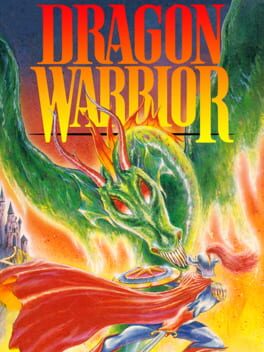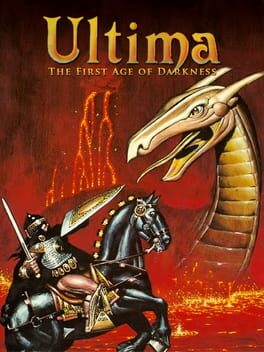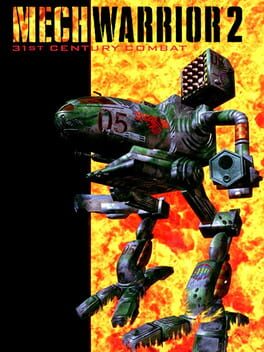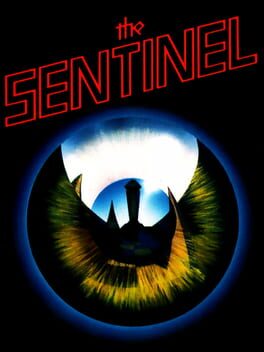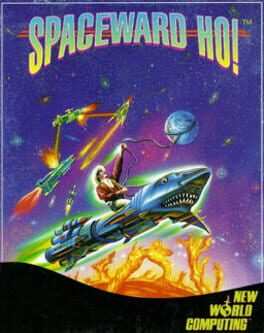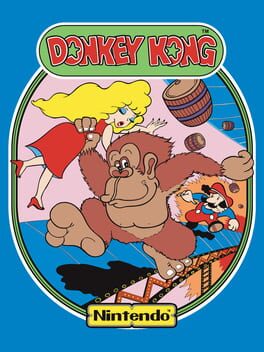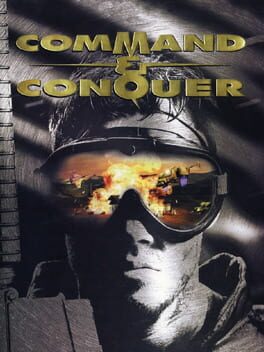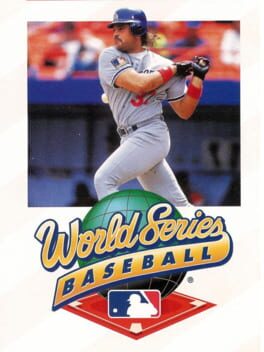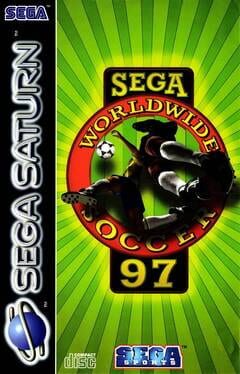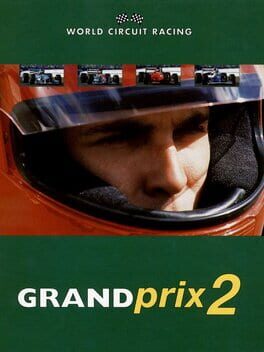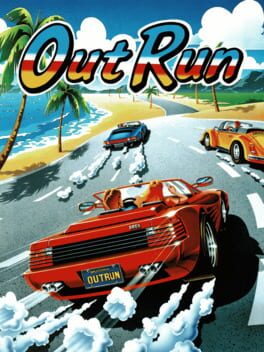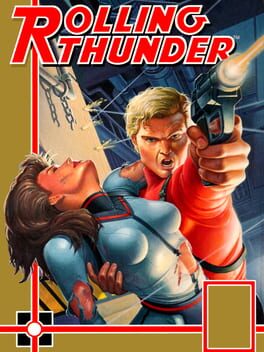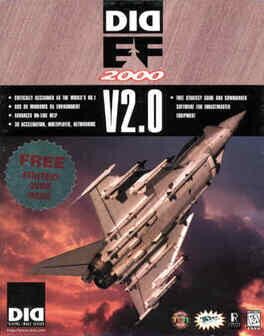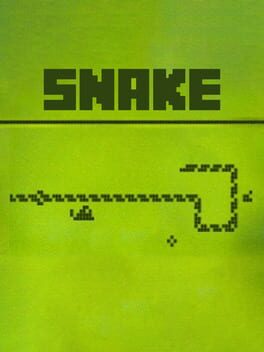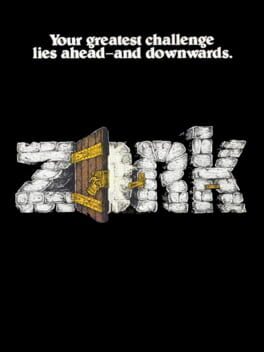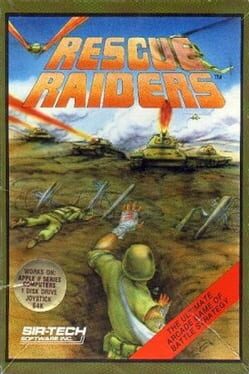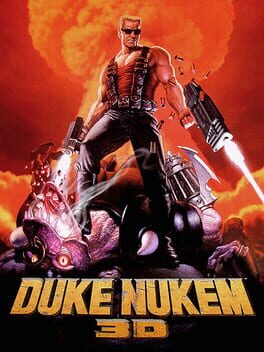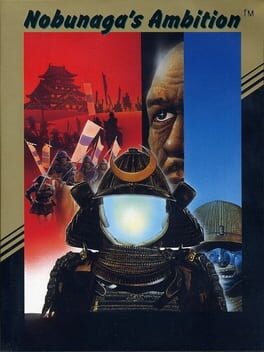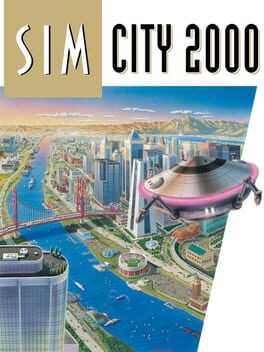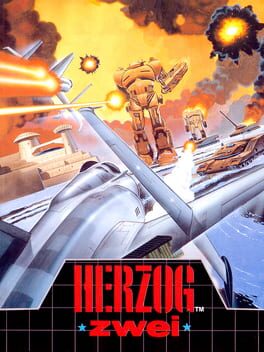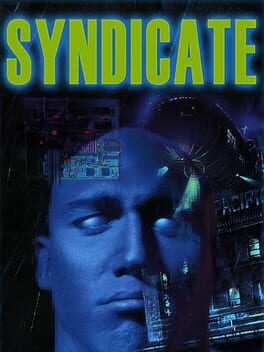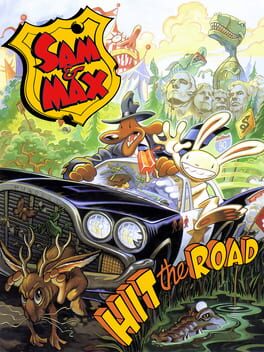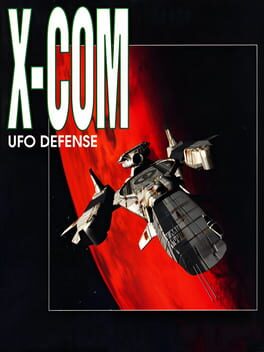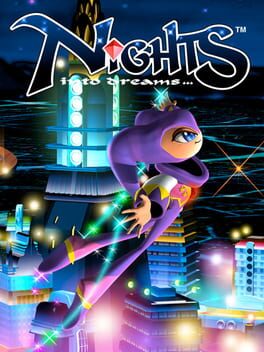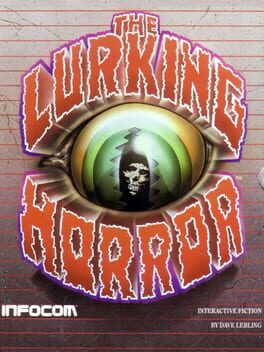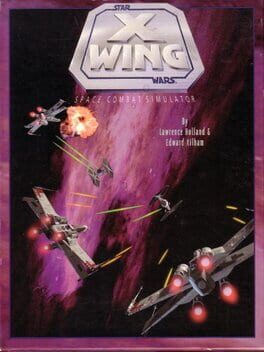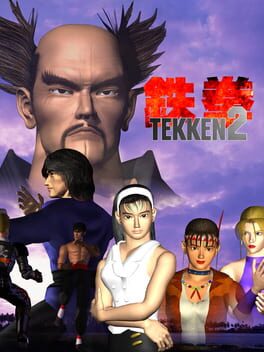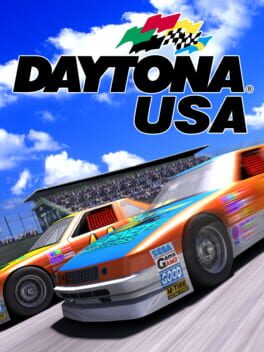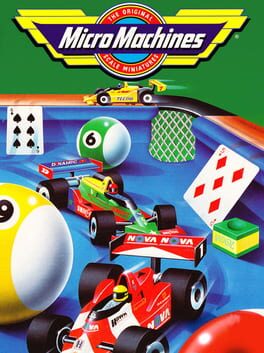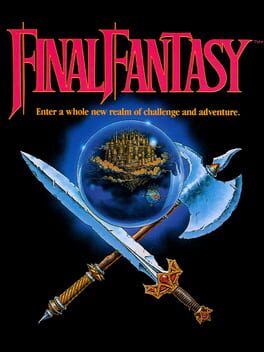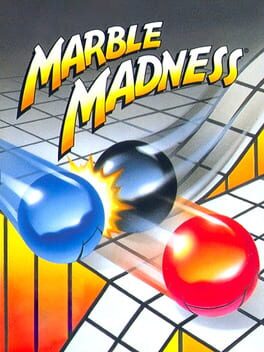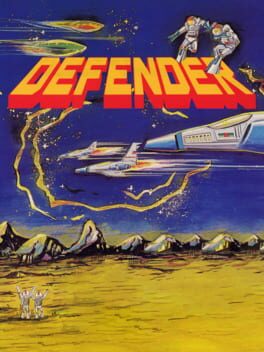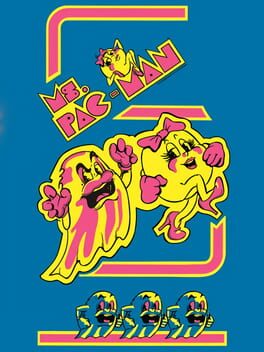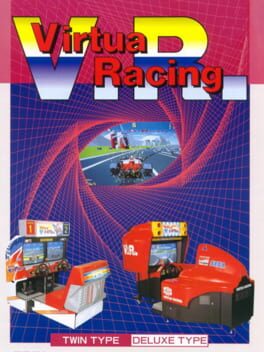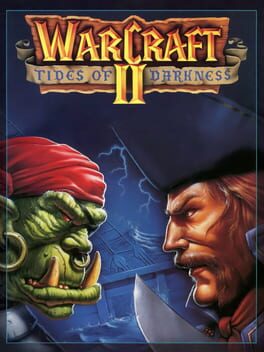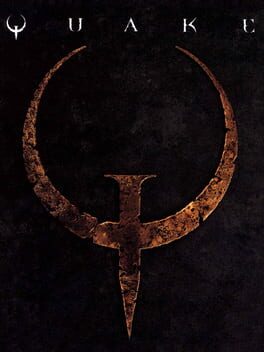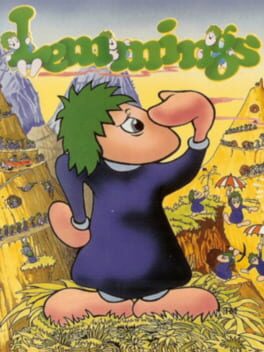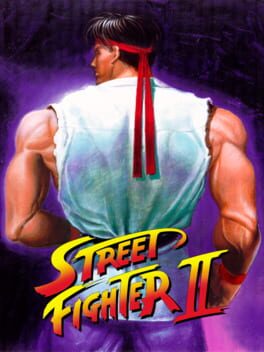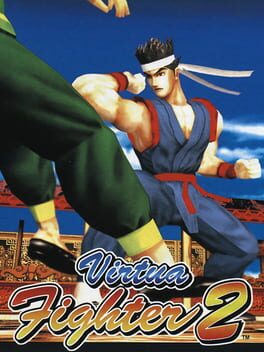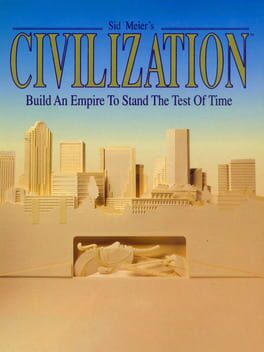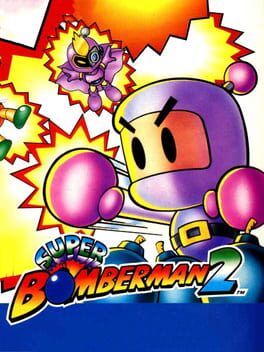NEXT Generation Magazine Top 100 Games of All-Time
This is an article first seen in Issue 21 with a street date of September 1996. The magazine was one of the first mainstream "industry" magazines that were available on normal store shelves. Not to mention the covers were super nice tactile feeling. This article may seem common now but it is an early example of the "list" format that took over the early 2000s. There are several unique entries that would be more likely to appear on Hidden Gem lists today and it makes for an interesting read. Below is the unedited text of the original article:
The best games of all time? Ranked? If truth be told, this is the story everyone told us not to do. So what choice did we have?
Everyone loves lists. At Next Generation, however, we're sick of seeing top 10 or top 100 lists that seem helplessly bogged down in short-term hysteria or dewey-eyed nostalgia. We don't want to see a list that is really the top 100 games "we liked in the arcade way back when," or "that sold a million copies," or — even more worrying — are "by companies that paid for advertising in this issue." We want to know the real top 100 best video and computer games. So we decided to do it ourselves.
An extremely stringent criteria was established. First, in order to make the list, the game had to be one that we would still play today, so nostalgia-tinged relics like Mr. Do's Wild Ride were lost immediately.
Second, while historical significance is undoubtedly important, the "100 most influential games of all time" is a different list entirely, so historical significance didn't get a game included all by itself.
Third, we have not equivocated by dividing the top 100 into the top 10 per system or per genre: That, to us, is the coward's way out. We have, however, cheated in one small way, by grouping series of games under one heading, if the games in the series were similar. This prevented series like Mario, Doom, or Final Fantasy from monopolizing the list.
Fourth, for a game to be considered, it had to be either released at the time of publication, or we had to have access to a final version. This, unfortunately, kept likely candidates like Diablo from the list. Finally, for multiplatform games, we listed the platforms on which we consider the game to be best. The glitchy Saturn version of Daytona USA isn't listed (the arcade version is), but the arcade-perfect PlayStation version of Joust is. For games that were available for a variety of personal computers, like the
Apple II, Commodore 64, and Amiga, we used the designation "PCs." If it just says PC, it refers to MS-DOS-based machines.
We started with a list of more than 500 games, and through many hours of sometimes exceptionally heated (and profane) discussion at the Next Generation offices, we narrowed it down to 150, which is where things started to get tough. Remarkably, culling the last 50 took only eight hours of debate. (And for the record, Gauntlet was number 101.)
Undoubtably, most readers will find favorite games left off the list, wonder at the inclusion of games they despise, or want to take us to task for the ranking of individual games. We welcome discussion of our choices, and have set up a special forum at Next Generation Online (http://www.next-generation.com/) specifically for discussion of this article. There is also a polling place where votes will be taken for your favorite games, and the results will be tallied and released online.
There are definitely some surprises on the list. Almost no shooters made the final cut, and there isn't a Final Fight-style game here, either (this reflects our own bias toward genres that require thought above twitch skills). And some people will undoubtedly say that there are too many Infocom text adventures, and not enough PC sims or puzzle games.
Nonetheless, we proudly stand by each of our choices.
The best games of all time? Ranked? If truth be told, this is the story everyone told us not to do. So what choice did we have?
Everyone loves lists. At Next Generation, however, we're sick of seeing top 10 or top 100 lists that seem helplessly bogged down in short-term hysteria or dewey-eyed nostalgia. We don't want to see a list that is really the top 100 games "we liked in the arcade way back when," or "that sold a million copies," or — even more worrying — are "by companies that paid for advertising in this issue." We want to know the real top 100 best video and computer games. So we decided to do it ourselves.
An extremely stringent criteria was established. First, in order to make the list, the game had to be one that we would still play today, so nostalgia-tinged relics like Mr. Do's Wild Ride were lost immediately.
Second, while historical significance is undoubtedly important, the "100 most influential games of all time" is a different list entirely, so historical significance didn't get a game included all by itself.
Third, we have not equivocated by dividing the top 100 into the top 10 per system or per genre: That, to us, is the coward's way out. We have, however, cheated in one small way, by grouping series of games under one heading, if the games in the series were similar. This prevented series like Mario, Doom, or Final Fantasy from monopolizing the list.
Fourth, for a game to be considered, it had to be either released at the time of publication, or we had to have access to a final version. This, unfortunately, kept likely candidates like Diablo from the list. Finally, for multiplatform games, we listed the platforms on which we consider the game to be best. The glitchy Saturn version of Daytona USA isn't listed (the arcade version is), but the arcade-perfect PlayStation version of Joust is. For games that were available for a variety of personal computers, like the
Apple II, Commodore 64, and Amiga, we used the designation "PCs." If it just says PC, it refers to MS-DOS-based machines.
We started with a list of more than 500 games, and through many hours of sometimes exceptionally heated (and profane) discussion at the Next Generation offices, we narrowed it down to 150, which is where things started to get tough. Remarkably, culling the last 50 took only eight hours of debate. (And for the record, Gauntlet was number 101.)
Undoubtably, most readers will find favorite games left off the list, wonder at the inclusion of games they despise, or want to take us to task for the ranking of individual games. We welcome discussion of our choices, and have set up a special forum at Next Generation Online (http://www.next-generation.com/) specifically for discussion of this article. There is also a polling place where votes will be taken for your favorite games, and the results will be tallied and released online.
There are definitely some surprises on the list. Almost no shooters made the final cut, and there isn't a Final Fight-style game here, either (this reflects our own bias toward genres that require thought above twitch skills). And some people will undoubtedly say that there are too many Infocom text adventures, and not enough PC sims or puzzle games.
Nonetheless, we proudly stand by each of our choices.
100 Games
100
99
98
96
94
90
89
88
84
83
82
81
80
76
74
70
68
59
58
55
53
50
46
45
44
42
41
39
38
33
32
31
29
28
22
21
19
16
14
13
12
Released: 1995
Platform: PC
Publisher: Blizzard
What's the game: As the
(immeasurably superior) sequel to the original WarCraft, once again ores and humans are battling for supremacy in this strategy war game. Spell-casting wizards, fire- breathing dragons, battleships, catapults, suicidal demolition squads, elven archers, gold miners, towers, armed troops, and really, really stupid peons are among the resources players must acquire and manage to defeat the enemy.
What's the big deal: A great single-player game, WarCraft II is elevated to classic status by the awesome multiplayer features in which up to eight human commanders can participate in the same scenario. Either have each army battle by itself, or team up (and alliances can always be changed midgame) for an allied assault. Either way, players are in for a treat.
The strategy is complex, the classy SVGA graphics keep the player in touch with everything that's going on, and WarCraft II features the best use of sampled speech we've ever experienced.
It's impossible not to get caught up in this utterly absorbing world of medieval fantasy warfare.
Memorable moments: Using the wizards to turn the enemy's most powerful units into bleating sheep is always good for a laugh.
Platform: PC
Publisher: Blizzard
What's the game: As the
(immeasurably superior) sequel to the original WarCraft, once again ores and humans are battling for supremacy in this strategy war game. Spell-casting wizards, fire- breathing dragons, battleships, catapults, suicidal demolition squads, elven archers, gold miners, towers, armed troops, and really, really stupid peons are among the resources players must acquire and manage to defeat the enemy.
What's the big deal: A great single-player game, WarCraft II is elevated to classic status by the awesome multiplayer features in which up to eight human commanders can participate in the same scenario. Either have each army battle by itself, or team up (and alliances can always be changed midgame) for an allied assault. Either way, players are in for a treat.
The strategy is complex, the classy SVGA graphics keep the player in touch with everything that's going on, and WarCraft II features the best use of sampled speech we've ever experienced.
It's impossible not to get caught up in this utterly absorbing world of medieval fantasy warfare.
Memorable moments: Using the wizards to turn the enemy's most powerful units into bleating sheep is always good for a laugh.
9
Released: 1996
Platform: PC
Publisher: Id Software
What's the game: Quake is a multiplayer, first-person, 3D shooter that comes fully loaded with the hottest implementation of real-time 3D graphics know-how as it exists today. Many gamers won't notice, but as opposed to Doom, Quake boasts a true, 3D polygon world, and polyonal, 3D enemies by the score. This enables such features as walking down slopes, under walkways, and looking up and down. Id also added a jump option to the mix.
What's the big deal: Quake is an evolution of the Doom ideal in more ways that one; not only does it deliver a satisfying single-player experience full of creepy tension, but best of all, up to eight players can shoot each other to bits over a network. Otherwise, sure, it's essentially just more of the same. But gamers were demanding more -- and Id has delivered, and once again moved the goalposts for its imitators. Doom's "Death Match" mode entered the videogame vocabulary as teh genric term for a multiplayer free-for-all, and for good reason -- it was great fun. And Quake's multiplayer mode is even better than Doom's.
Memorable moments: Id's undeniable penchant for frightening satanic imagery never fails to shock, but the real chiller in Quake has to be nearly drowning in an underground lake.
Platform: PC
Publisher: Id Software
What's the game: Quake is a multiplayer, first-person, 3D shooter that comes fully loaded with the hottest implementation of real-time 3D graphics know-how as it exists today. Many gamers won't notice, but as opposed to Doom, Quake boasts a true, 3D polygon world, and polyonal, 3D enemies by the score. This enables such features as walking down slopes, under walkways, and looking up and down. Id also added a jump option to the mix.
What's the big deal: Quake is an evolution of the Doom ideal in more ways that one; not only does it deliver a satisfying single-player experience full of creepy tension, but best of all, up to eight players can shoot each other to bits over a network. Otherwise, sure, it's essentially just more of the same. But gamers were demanding more -- and Id has delivered, and once again moved the goalposts for its imitators. Doom's "Death Match" mode entered the videogame vocabulary as teh genric term for a multiplayer free-for-all, and for good reason -- it was great fun. And Quake's multiplayer mode is even better than Doom's.
Memorable moments: Id's undeniable penchant for frightening satanic imagery never fails to shock, but the real chiller in Quake has to be nearly drowning in an underground lake.
8
Released: 1991
Platform: Multiple
Publisher: Psygnosis
What's the game: At its time of release, Lemmings was like no other game seen before. At first, many gamers had no idea how to play it. But they soon learned. Each level provides the player with a 2D cross-section view of a miniature world. In each world players quickly see an entrance, an exit, separated by a vast array of traps, walls, and fatal drops.
Next, the entrance opens and out marches a procession of goofy, little green lemmings (who — as we all know — are famous for leaping off cliffs to their deaths). These guys will then start exploring the level on their own accord, but without any thought to their own personal safety. It's the player's job to make sure that enough lemmings make it safely to the exit (players are told at the start of each level how many must be saved), in order to complete the level.
To do this, player's allocate various roles to select lemmings. For example, if all the lemmings are happily walking along a platform that ends in a fatal drop, players can "tell" the first lemming to stop. He'll then immediately halt, raise his little lemming paw to tell all the other lemmings not to walk any further, they'll all listen to him, and walk back the other way.
Other roles include miners, diggers, parachutists, rock climbers, and bridge builders. And using a combination of all of these is the only way to succeed. What's the big deal: Now, all that explanation may not sound so hot, but trust us — wait until you try it. Second only to Tetris, Lemmings is the most addictive puzzle game of all time. And although it's often imitated ( Worms and Humans, to name just two), DMA Designs' original design has never been bettered.
Memorable moments: The little lemming scream of "Oh no!" just before one blows up.
Platform: Multiple
Publisher: Psygnosis
What's the game: At its time of release, Lemmings was like no other game seen before. At first, many gamers had no idea how to play it. But they soon learned. Each level provides the player with a 2D cross-section view of a miniature world. In each world players quickly see an entrance, an exit, separated by a vast array of traps, walls, and fatal drops.
Next, the entrance opens and out marches a procession of goofy, little green lemmings (who — as we all know — are famous for leaping off cliffs to their deaths). These guys will then start exploring the level on their own accord, but without any thought to their own personal safety. It's the player's job to make sure that enough lemmings make it safely to the exit (players are told at the start of each level how many must be saved), in order to complete the level.
To do this, player's allocate various roles to select lemmings. For example, if all the lemmings are happily walking along a platform that ends in a fatal drop, players can "tell" the first lemming to stop. He'll then immediately halt, raise his little lemming paw to tell all the other lemmings not to walk any further, they'll all listen to him, and walk back the other way.
Other roles include miners, diggers, parachutists, rock climbers, and bridge builders. And using a combination of all of these is the only way to succeed. What's the big deal: Now, all that explanation may not sound so hot, but trust us — wait until you try it. Second only to Tetris, Lemmings is the most addictive puzzle game of all time. And although it's often imitated ( Worms and Humans, to name just two), DMA Designs' original design has never been bettered.
Memorable moments: The little lemming scream of "Oh no!" just before one blows up.
Released: 1991
Platform: Multiple
Publisher: Capcom
What's the game: 2D fighting.
What's the big deal: Despite the many knocks Next Generation
has given 2D fighters over the past two years ("If it ain't broke, don't fix it" is not an attitude that leads to progress), and despite our fatigue with the number of cookie-cutter SF2 clones still out there, the original is still one of the greatest games of all. (Um, the seventh greatest game, to be precise.)
It's all about control and depth. And SF2 has both by the bucketload. No game has ever offered players such a range of options, and then provided such a number of permutations and combinations of their use. No game has ever felt so "robust" in terms of cause and effect, and no game has ever honed its core essence to such perfection.
This is another game that all budding game designers should be forced to play.
Memorable moments: Your first successful execution of a Dragon Punch at an incoming opponent.
Platform: Multiple
Publisher: Capcom
What's the game: 2D fighting.
What's the big deal: Despite the many knocks Next Generation
has given 2D fighters over the past two years ("If it ain't broke, don't fix it" is not an attitude that leads to progress), and despite our fatigue with the number of cookie-cutter SF2 clones still out there, the original is still one of the greatest games of all. (Um, the seventh greatest game, to be precise.)
It's all about control and depth. And SF2 has both by the bucketload. No game has ever offered players such a range of options, and then provided such a number of permutations and combinations of their use. No game has ever felt so "robust" in terms of cause and effect, and no game has ever honed its core essence to such perfection.
This is another game that all budding game designers should be forced to play.
Memorable moments: Your first successful execution of a Dragon Punch at an incoming opponent.
Released: 1994
Platform: Arcade, Saturn
Publisher: Sega
What's the game: A two-player fighter based on a startling range of martial arts styles. Success playing Virtua Fighter 2 depends entirely on a player's skill, reaction time, and experience — not on secret combinations, codes, or rote memory moves.
What's the big deal: Sega AM2's original Virtua Fighter was a breakthrough in almost every category, and Virtua Fighter 2 builds enormously on these foundations. As an arcade game, it boasts scores of complex moves and combinations with only a three-button configuration, simultaneously enabling both an ease of use and incredible depth beyond that of other fighters.
Each of the colorful fighting characters are designed around realistic physics and motion- captured human movement. The finished 3D polygon, texture- mapped characters are integrated seamlessly into a cohesive game world. But it's the differentiation in the characters' fighting styles that makes this game such a classic. Lau, for example, fights completely differently from Jacky, or Jeffry, or Pai, and so players are required to learn how to fight differently against each new opponent. This adds tremendous depth and endless gameplay value to the title.
Perhaps Virtua Fighter 2's greatest achievement is its successful translation of state-of- the-art 2D gameplay (see Street Fighter 2) to the 3D world. The original Virtua Fighter 6\6n'\ quite manage to re-create the pacing and fluidity of Capcom's finest, but Sega's model 2 board enabled Virtua Fighter 2 to manage it with clock cycles to spare — despite its heavy graphic burden. Never have 300,000 polygons per second moved so well together.
Indeed, VF2 is still one of the best looking games in the arcades or in the home, and it has remained high on the arcade charts since it first hit in December 1994. Up until the release of Super Mario 64, Virtua Fighter 2 was still the biggest game in Japan, despite it being almost three years old. And the title is pretty much single- handedly responsible for Saturn's success in its home country.
Perhaps the only threat to Virtua Fighter 2's reign as king of the fighters is the prospect of Virtua Fighter 3. In anticipation of its Model 3 board-powered launch this fall, Sega has already started licensing out the highly- desirable Model 2 technology to third parties.
Memorable moments: There are many: 1) Winning with Shun-Di: Yu Suzuki encorporated a certain drinking habit of Shun's into the game, and with every sip out of his little wine bottle, Shun-Di becomes able to perform a new, alcohol-fueled move. 2) Discovering the codes for entering into Dural's stage. 3) Being told by the delectable Sarah that you'd "Better run home to momma now."
Platform: Arcade, Saturn
Publisher: Sega
What's the game: A two-player fighter based on a startling range of martial arts styles. Success playing Virtua Fighter 2 depends entirely on a player's skill, reaction time, and experience — not on secret combinations, codes, or rote memory moves.
What's the big deal: Sega AM2's original Virtua Fighter was a breakthrough in almost every category, and Virtua Fighter 2 builds enormously on these foundations. As an arcade game, it boasts scores of complex moves and combinations with only a three-button configuration, simultaneously enabling both an ease of use and incredible depth beyond that of other fighters.
Each of the colorful fighting characters are designed around realistic physics and motion- captured human movement. The finished 3D polygon, texture- mapped characters are integrated seamlessly into a cohesive game world. But it's the differentiation in the characters' fighting styles that makes this game such a classic. Lau, for example, fights completely differently from Jacky, or Jeffry, or Pai, and so players are required to learn how to fight differently against each new opponent. This adds tremendous depth and endless gameplay value to the title.
Perhaps Virtua Fighter 2's greatest achievement is its successful translation of state-of- the-art 2D gameplay (see Street Fighter 2) to the 3D world. The original Virtua Fighter 6\6n'\ quite manage to re-create the pacing and fluidity of Capcom's finest, but Sega's model 2 board enabled Virtua Fighter 2 to manage it with clock cycles to spare — despite its heavy graphic burden. Never have 300,000 polygons per second moved so well together.
Indeed, VF2 is still one of the best looking games in the arcades or in the home, and it has remained high on the arcade charts since it first hit in December 1994. Up until the release of Super Mario 64, Virtua Fighter 2 was still the biggest game in Japan, despite it being almost three years old. And the title is pretty much single- handedly responsible for Saturn's success in its home country.
Perhaps the only threat to Virtua Fighter 2's reign as king of the fighters is the prospect of Virtua Fighter 3. In anticipation of its Model 3 board-powered launch this fall, Sega has already started licensing out the highly- desirable Model 2 technology to third parties.
Memorable moments: There are many: 1) Winning with Shun-Di: Yu Suzuki encorporated a certain drinking habit of Shun's into the game, and with every sip out of his little wine bottle, Shun-Di becomes able to perform a new, alcohol-fueled move. 2) Discovering the codes for entering into Dural's stage. 3) Being told by the delectable Sarah that you'd "Better run home to momma now."
Released: 1985-1991
Platform: NES, Super NES, Game Boy
Publisher: Nintendo
What's the game: Slow-paced, side-scrolling platformer starring a pudgy Italian plumber who's trying to save a princess.
What's the big deal: In a way, despite the comparisons that are always drawn between them, Super Mario has very little in common with Sonic the Hedgehog. Mario moves slower, the graphics are more youthful than hip, and the exhilarating lure of adventure is favored over the heady excitement of Sonic's sheer speed. What really sets the two series apart though, is Shigeru Miyamoto and the rest of Nintendo's Mario team's amazing sense for exactly what works and what doesn't in a videogame. The levels in all of Mario's adventures are so perfectly designed that there are very few gamers who can look at them and not see sheer brilliance.
The sense of exploration one gets when sinking down a pipe, or climbing a vine to the top of the clouds is simply unbeatable, and it's this sense of discovery one gets with Mario that makes the games rank so high on this list. The trademark cutesy graphics also have their own appeal, as does the incredibly catchy music.
It's not for everyone's taste, certainly. But for those gamers who are trapped in Mario's spell (and there are millions of us), Mario's 8-bit and 16-bit adventures can still thrill, excite, and surprise.
To anyone who has a Super NES or NES and a Mario cart gathering dust in a drawer, Next Generation heartily recommends cleaning them off and taking them out for another spin. You won't be disappointed.
Memorable moments: Flying.
Platform: NES, Super NES, Game Boy
Publisher: Nintendo
What's the game: Slow-paced, side-scrolling platformer starring a pudgy Italian plumber who's trying to save a princess.
What's the big deal: In a way, despite the comparisons that are always drawn between them, Super Mario has very little in common with Sonic the Hedgehog. Mario moves slower, the graphics are more youthful than hip, and the exhilarating lure of adventure is favored over the heady excitement of Sonic's sheer speed. What really sets the two series apart though, is Shigeru Miyamoto and the rest of Nintendo's Mario team's amazing sense for exactly what works and what doesn't in a videogame. The levels in all of Mario's adventures are so perfectly designed that there are very few gamers who can look at them and not see sheer brilliance.
The sense of exploration one gets when sinking down a pipe, or climbing a vine to the top of the clouds is simply unbeatable, and it's this sense of discovery one gets with Mario that makes the games rank so high on this list. The trademark cutesy graphics also have their own appeal, as does the incredibly catchy music.
It's not for everyone's taste, certainly. But for those gamers who are trapped in Mario's spell (and there are millions of us), Mario's 8-bit and 16-bit adventures can still thrill, excite, and surprise.
To anyone who has a Super NES or NES and a Mario cart gathering dust in a drawer, Next Generation heartily recommends cleaning them off and taking them out for another spin. You won't be disappointed.
Memorable moments: Flying.
Released: 1994-1996
Platform: PC
Publisher: MlcroProse
What's the game: The description may not sound like much — a turn-based, top-down strategy game with bland graphics consisting of nothing more than small colored squares moving around on a map — but Civilization is a classic example of form following function (aka gameplay first, graphics later). Like the man who invented the paperclip or the guy who saw potential in the hula-hoop, MicroProse legend Sid Meier had a very simple concept governing his development of Civilization. His goal was to give players the chance to play God. And he succeeded, admirably.
Players command the entire course of the world's evolution of civilization {from ancient to modern times) competing with rival cultures with a view to becoming top dog of the world.
What's the big deal: Controlling
the fate of humanity throughout the course of history, that's the big deal. Civilization 2's improved graphics and user interface merely compounded Civilization's status as the deepest, most rewarding PC game of all time.
Memorable moments: Defeating France. Always a crowd pleaser.
Platform: PC
Publisher: MlcroProse
What's the game: The description may not sound like much — a turn-based, top-down strategy game with bland graphics consisting of nothing more than small colored squares moving around on a map — but Civilization is a classic example of form following function (aka gameplay first, graphics later). Like the man who invented the paperclip or the guy who saw potential in the hula-hoop, MicroProse legend Sid Meier had a very simple concept governing his development of Civilization. His goal was to give players the chance to play God. And he succeeded, admirably.
Players command the entire course of the world's evolution of civilization {from ancient to modern times) competing with rival cultures with a view to becoming top dog of the world.
What's the big deal: Controlling
the fate of humanity throughout the course of history, that's the big deal. Civilization 2's improved graphics and user interface merely compounded Civilization's status as the deepest, most rewarding PC game of all time.
Memorable moments: Defeating France. Always a crowd pleaser.
Released: 1994
Platform: Super NES
Publisher: HudsonSoft
What's the game: Forget the one-player game (it sucks). The Super Bomberman 2 we're talking about is the four- player "battle" mode (on world one, if you want all the details}. Four players start the game, each in a corner of a square maze. The object of the game is to blow up all your opponents — last one standing is the winner. Power-ups increase the size of the bombs' explosion, the number of bombs that can be dropped onscreen at any one time, and the bomberman's speed. They enable players also to slide bombs placed by themselves or other players, and — perhaps most importantly — pick up bombs and throw them. Each round lasts one, two, or three minutes — after which point the game is considered a draw, if more than one player is still alive. All players re-enter the arena and try again.
What's the big deal: What can we say? Super Bomberman 2 easily takes the award of most-played game in the Next Generation offices. For two hours, every day, every week — Super Bomberman 2 is casting its spell over a wider and wider audience. Of course, all the writers play. But so do all the artists. And all the guys who sell advertising space {they're actually quite good). And the cleaners. And the administration assistants. And so on...
The trick is that Super Bomberman 2 epitomizes the Japanese art of taking a ludicrously simple concept, and then executing that concept faultlessly. The control is superb, the graphics are ultimately functional (if not oddly cute), the play is balanced to perfection — and four players won't have more fun doing anything else. We mean it. WarCraft 2, Quake, Daytona USA — they're all great multiplayer games. But Super Bomberman 2 is better.
Memorable moments: You're trapped in a comer with no way out. Bombs (which will explode at any second) surround you. The pink bomberman {you can chose the color of your character) who trapped you is gleefully scuttling away to safety. With one, final, desperate breath, you hoist one last bomb toward the opponent. It hits him, stuns him for a split second, and gets caught in a chain reaction of flame from the bombs that just exploded around you. You're still dead, but you took your murderer with you...
Platform: Super NES
Publisher: HudsonSoft
What's the game: Forget the one-player game (it sucks). The Super Bomberman 2 we're talking about is the four- player "battle" mode (on world one, if you want all the details}. Four players start the game, each in a corner of a square maze. The object of the game is to blow up all your opponents — last one standing is the winner. Power-ups increase the size of the bombs' explosion, the number of bombs that can be dropped onscreen at any one time, and the bomberman's speed. They enable players also to slide bombs placed by themselves or other players, and — perhaps most importantly — pick up bombs and throw them. Each round lasts one, two, or three minutes — after which point the game is considered a draw, if more than one player is still alive. All players re-enter the arena and try again.
What's the big deal: What can we say? Super Bomberman 2 easily takes the award of most-played game in the Next Generation offices. For two hours, every day, every week — Super Bomberman 2 is casting its spell over a wider and wider audience. Of course, all the writers play. But so do all the artists. And all the guys who sell advertising space {they're actually quite good). And the cleaners. And the administration assistants. And so on...
The trick is that Super Bomberman 2 epitomizes the Japanese art of taking a ludicrously simple concept, and then executing that concept faultlessly. The control is superb, the graphics are ultimately functional (if not oddly cute), the play is balanced to perfection — and four players won't have more fun doing anything else. We mean it. WarCraft 2, Quake, Daytona USA — they're all great multiplayer games. But Super Bomberman 2 is better.
Memorable moments: You're trapped in a comer with no way out. Bombs (which will explode at any second) surround you. The pink bomberman {you can chose the color of your character) who trapped you is gleefully scuttling away to safety. With one, final, desperate breath, you hoist one last bomb toward the opponent. It hits him, stuns him for a split second, and gets caught in a chain reaction of flame from the bombs that just exploded around you. You're still dead, but you took your murderer with you...
2
Released: 1987
Platform: Multiple
Publisher: Nintendo, Spectrum Holobyte, many others
What's the game: Position blocks dropping down a well to create
horizontal lines without gaps.
What's the big deal: It takes about five seconds to learn how to play Tetris, and the rest of your life to perfect it.
There is something so perfect, so Zen about the falling blocks of Tetris that the game has captured the interest of everyone who has ever played it. Businessmen, housewives, hard- core gamers — al! have become addicted. Dreaming Tetris blocks is not an uncommon symptom of the afflicted, and mentally rearranging furniture or buildings into lines is to be expected.
Tetris really is the closest to
videogaming perfection that anyone has ever come. Sure, it doesn't attempt much in terms of graphics or variety, but this is simply another of its strength — it plays as good on the Game Boy as on any other system.
Although mathematician- cum-game-designer Alexy Pajitnov's subsequent efforts have fallen short of Tetris, this is not surprising; it is difficult to top what many people still consider the most pure game ever devised.
Memorable moments: Next Generation shipping late because two editors wasted so much r time on Tetris challenges.
Platform: Multiple
Publisher: Nintendo, Spectrum Holobyte, many others
What's the game: Position blocks dropping down a well to create
horizontal lines without gaps.
What's the big deal: It takes about five seconds to learn how to play Tetris, and the rest of your life to perfect it.
There is something so perfect, so Zen about the falling blocks of Tetris that the game has captured the interest of everyone who has ever played it. Businessmen, housewives, hard- core gamers — al! have become addicted. Dreaming Tetris blocks is not an uncommon symptom of the afflicted, and mentally rearranging furniture or buildings into lines is to be expected.
Tetris really is the closest to
videogaming perfection that anyone has ever come. Sure, it doesn't attempt much in terms of graphics or variety, but this is simply another of its strength — it plays as good on the Game Boy as on any other system.
Although mathematician- cum-game-designer Alexy Pajitnov's subsequent efforts have fallen short of Tetris, this is not surprising; it is difficult to top what many people still consider the most pure game ever devised.
Memorable moments: Next Generation shipping late because two editors wasted so much r time on Tetris challenges.
Released: 1996
Platform: Nintendo 64
Publisher: Nintendo
What's the game: Mario takes to the 3D world for his first 64-bit adventure.
What's the big deal: Super Mario 64 is the first true 3D game to play as good as the 2D games of the 16-bit era. (Virtua Fighter 2 almost succeeded but it's not really 3D.) As such, it represents the new high-water mark of both gameplay and graphic sophistication. The game arrived at the Next Generation offices on June 23, the day of Nintendo 64's launch in Japan, and we start playing. Thirty six hours later (no, we didn't sleep), we'd completed it with 75 rings. Except, of course that completing the game with 75 rings isn't really completing the game at all. The eventual goal of completing with all the rings (there are at least 120) still evades us. If Tetris is the purest, narrowest, most complete videogame ever created, then Super Mario 64 is the exact opposite. This is an entire 3D world, just waiting to be explored. This is a creation of genius. Plenty has been written about Super Mario 64, while most U.S. gamers have yet to experience the game for themselves. This will all change on September 30, however, as Nintendo 64 officially launches in the U.S. In the meanwhile, we'll just let the screen shots speak for themselves -- just remember that this is one of those blissful but all too rare occasions where the game plays every single bit as good as it looks.
Memorable moments: All of it. We're serious.
Platform: Nintendo 64
Publisher: Nintendo
What's the game: Mario takes to the 3D world for his first 64-bit adventure.
What's the big deal: Super Mario 64 is the first true 3D game to play as good as the 2D games of the 16-bit era. (Virtua Fighter 2 almost succeeded but it's not really 3D.) As such, it represents the new high-water mark of both gameplay and graphic sophistication. The game arrived at the Next Generation offices on June 23, the day of Nintendo 64's launch in Japan, and we start playing. Thirty six hours later (no, we didn't sleep), we'd completed it with 75 rings. Except, of course that completing the game with 75 rings isn't really completing the game at all. The eventual goal of completing with all the rings (there are at least 120) still evades us. If Tetris is the purest, narrowest, most complete videogame ever created, then Super Mario 64 is the exact opposite. This is an entire 3D world, just waiting to be explored. This is a creation of genius. Plenty has been written about Super Mario 64, while most U.S. gamers have yet to experience the game for themselves. This will all change on September 30, however, as Nintendo 64 officially launches in the U.S. In the meanwhile, we'll just let the screen shots speak for themselves -- just remember that this is one of those blissful but all too rare occasions where the game plays every single bit as good as it looks.
Memorable moments: All of it. We're serious.
